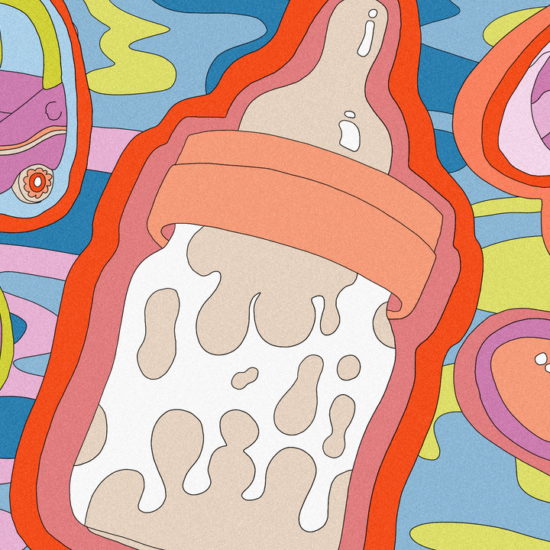
While SARS-CoV-2 has dominated headlines for the past few years, other viruses have been simmering in the background. And with most of COVID-19’s infection control measures (like mask-wearing, isolation, and physical distancing) now gone in the U.S., those viruses are starting to roar back again.
The U.S. has already seen spikes in RSV and influenza, and now norovirus cases are inching upward, according to the latest data from the U.S. Centers for Disease Control and Prevention (CDC). Unlike SARS-CoV-2, RSV, and influenza, norovirus is not a respiratory pathogen but instead causes problems in the gastrointestinal tract. Each year, the U.S. has about 2,500 outbreaks that typically occur during the winter months from November to April, leading to 19 to 21 million cases of illness and nearly half a million emergency-room visits. Young children and older people are the most vulnerable to serious complications from the infections, leading to 100,000 hospitalizations and 900 deaths annually.
The CDC tracks norovirus cases through the National Respiratory and Enteric Virus Surveillance System (NREVSS), which receives reports of positive norovirus tests from clinical labs and state and local state health departments from around the country. Since mid-January, the three-week average of percent of positive tests has jumped from 10.5% to 15% in the first week of February.
Because norovirus infections aren’t one of the required diseases for state health departments to report to the CDC, given that most people aren’t tested for it, the agency also tracks the virus via outbreaks through its Norovirus Sentinel Testing and Tracking network (NoroSTAT). The network includes data on outbreaks—which the CDC defines as two or more cases resulting from a common exposure or source that lab tests have confirmed are due to norovirus, or that doctors suspect are caused by norovirus—from 14 state health departments. In January 2023—the most recently recorded data—NoroSTAT reported a sharp increase from 15 to 26 outbreaks of norovirus. Overall, there have been more outbreaks this year compared to last year, when numbers were low because pandemic protocols such as mask-wearing and social distancing likely hampered the virus’ ability to spread. That suggests that the recent upticks this year are likely a resetting back to pre-pandemic cycles of infections. Still, when looked at over trends from the past decade, says a CDC spokesperson, “reported norovirus outbreaks and reported cases from both state health departments and clinical laboratories are increasing but remain within the expected range for this time of year.”
“I do think we getting back to pre-pandemic epidemiology of many these viruses,” says Dr. Camille Sabella, director of the center for pediatric infectious diseases at Cleveland Clinic Children’s.
Here’s what you need to know about norovirus.
What is norovirus?
Norovirus belongs to a family of viruses called Caliciviridae and—like SARS-CoV-2—are made up of single strands of the genetic material RNA. There are dozens of different variants of norovirus, also known as the stomach flu or viral gastroenteritis.
The virus is very contagious and spreads quickly among infected people via close contact, touching infected surfaces such as doorknobs and handles, and sharing food and utensils.
Where does norovirus come from?
Unlike many other viruses, norovirus does not sequester in animals and jump to people, but persists and predominantly spreads in people. “The reservoir for norovirus is always humans or human waste material,” says Lee-Ann Jaykus, professor of food bioprocessing and nutrition sciences at North Carolina State University. A gram of infected feces can contain billions of virus particles, and it only takes anywhere from 10 to 1,000 particles to make someone sick. The virus can survive in water sources for long periods of time, so anywhere sewage or bilge is dumped, there’s a good chance of finding the virus. “If you go to all the water sources in the country, and ask what the potential is to get some amount of norovirus genomes, it’s pretty high,” says James Samuel, department head of microbial pathogenesis and immunology at Texas A&M School of Medicine.
That includes water feeding into areas where shellfish grow. As filter feeders, mollusks and oysters can harbor the virus and sicken people who eat them. The most recent norovirus outbreak reported by the CDC occurred among oysters in Galveston Bay, Texas in December.
And once someone gets infected, the virus’ high contagiousness means outbreaks occur most commonly in group settings, most famously on cruise ships where people are in close quarters for lengthy periods of time and shared surfaces may not be sanitized frequently. But these exposures only account for about 1% of norovirus outbreaks in the country; the majority occur in places such as hospitals and long-term care facilities, restaurants and catered events like weddings, schools, and childcare centers.
What are the symptoms?
The stomach flu causes vomiting, diarrhea, and queasiness. Some people experience stomach pain and fever, and symptoms usually start anywhere from 12 to 48 hours after infection. Most people feel sick for about one to three days.
Can I be tested for norovirus?
Doctors can perform a test, but it requires a stool sample. Such sampling is mostly done by research scientists tracking an outbreak. “We don’t commonly test for these viruses in most individuals,” says Sabella. “When we see these patients, usually from the case history it’s very clear that viral gastroenteritis is likely.” Because the virus spreads so quickly, if family members all experience the same symptoms in close proximity, for example, doctors will suspect norovirus or a similar viral infection.
How norovirus is treated
There is no vaccine or treatment for norovirus, but the infection is a good candidate for one, says Samuel. The recent success of using mRNA technology in the COVID-19 vaccines should lead to a push for using the same platform for a norovirus vaccine. “There is going to be a renaissance, I predict, in terms of vaccines using mRNA against a number of different diseases,” he says, including the stomach flu.
When it comes to treatments for norovirus, the need may not be as urgent, since most people recover from the symptoms in 48 to 72 hours—so antiviral development isn’t as robust. “While there are many different viruses that cause gastroenteritis, the majority of the time it’s not important to know what specific virus is causing symptoms because the treatment is generally the same,” says Sabella. Doctors advise people to drink plenty of liquids, since vomiting and diarrhea and lead to dehydration. In some cases, they may recommend anti-nausea medications to ease symptoms.
How to protect yourself from norovirus
Norovirus is more difficult to eliminate than SARS-CoV-2. Start with the same infection control measures for COVID-19, but keep these additional things in mind:
- Wash your hands with soap and water, not hand sanitizer, frequently. Hand sanitizers won’t inactivate norovirus, says Jaykus, but the physical act of washing your hands, plus the soap and running water, can remove more virus.
- Wash fruits and vegetables thoroughly before eating.
- Cook seafood to at least 145°F.
- Try to isolate and sanitize shared surfaces if someone in your household is infected. If there is feces or vomit on the surface, clean it first before disinfecting it, since disinfecting agents don’t work as well in the presence of organic material.
More Must-Reads From TIME














